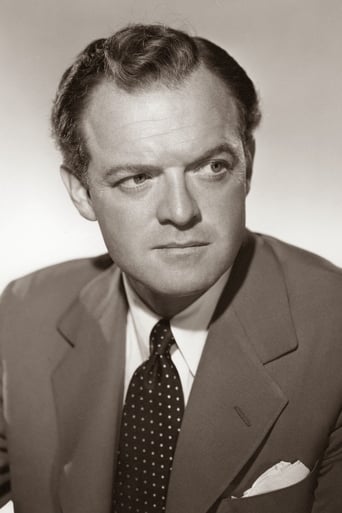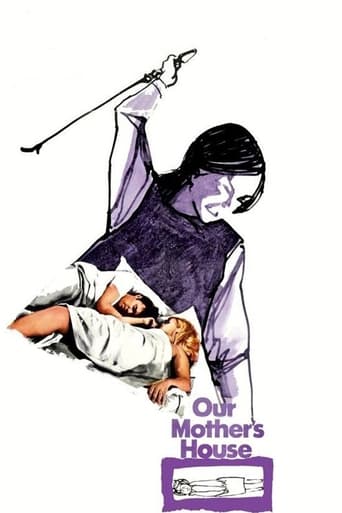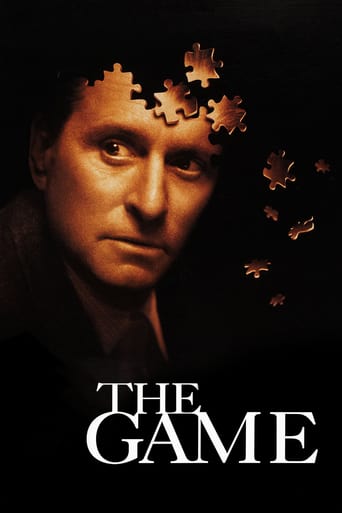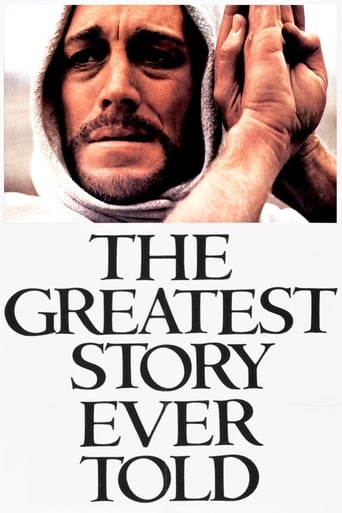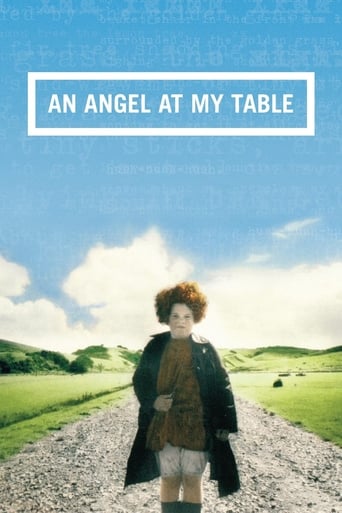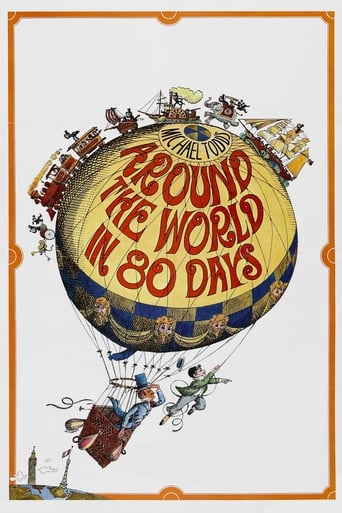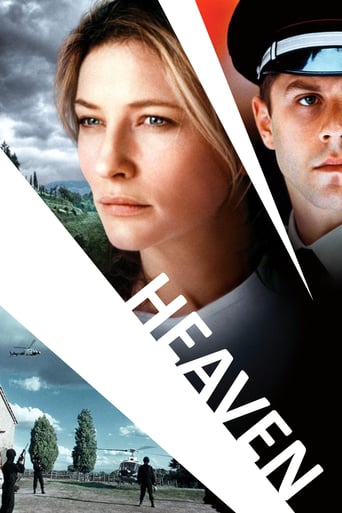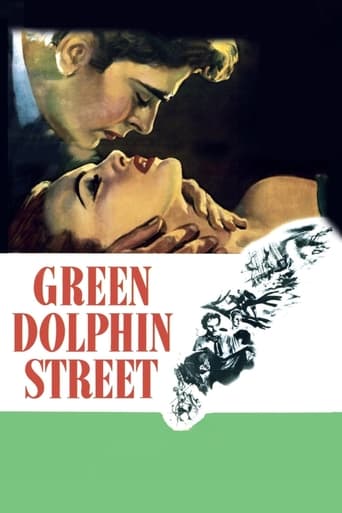

Green Dolphin Street (1947)
Sophie loved Edmund, but he left town when her parents forced her to marry wealthy Octavius. Years later, Edmund returns with his son, William. Sophie's daughter, Marguerite, and William fall in love. Marguerite's sister, Marianne, also loves William. Timothy, a lowly carpenter, secretly loves Marianne. He kills a man in a fight, and Edmund helps him flee to New Zealand. William deserts inadvertently from the navy, and also flees in disgrace to New Zealand, where he and Timothy start a profitable business. One night, drunk, William writes Octavius, demanding his daughter's hand; but, being drunk, he asks for the wrong sister.
Watch Trailer
Cast
Similar titles
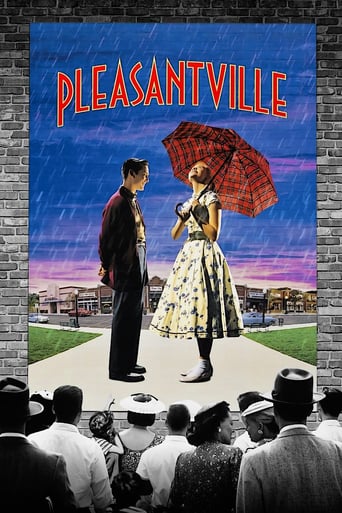

Reviews
Very very predictable, including the post credit scene !!!
Absolutely Fantastic
There is, somehow, an interesting story here, as well as some good acting. There are also some good scenes
The movie turns out to be a little better than the average. Starting from a romantic formula often seen in the cinema, it ends in the most predictable (and somewhat bland) way.
Directed by Victor Saville, with a Samson Raphaelson screenplay based on Elizabeth Goudge's book, this overlong adventure-romance drama is notable for its Academy Award winning Special Effects, Oscar nominated B&W Cinematography, Editing, and Sound. The cast includes Lana Turner, Donna Reed, Van Heflin, Richard Hart, Frank Morgan, Edmund Gwenn, Dame May Witty, Reginald Owen, and Gladys Cooper."A hundred years ago on an island called Saint Pierre in the English Channel", at the convent which rests at the top of this rocky cone- shaped 'mountain', Mother Superior (Whitty) receives a letter which tells that Dr. Edmund Ozanne (Morgan) is coming back home to settle there. She is quick to visit Sophie Patourel (Cooper), who had been the forbidden love of his life, but Sophie's wealthy parents would not allow her to marry below her class. Sophie later married Octavius Patourel (Gwenn); they have two comely daughters, Marianne (Turner) and Marguerite (Reed). Like her mother, Marianne is coveted by a working class craftsman named Timothy Haslam (Heflin). Dr. Ozanne moves in across the street with his eligible bachelor son William (Hart). They soon meet the Patourel's daughters and are saved from a potentially embarrassing introduction by their mother, who arrives in time to steer the conversation. William makes an impression on both young ladies: despite his unkempt appearance and indifference to her, Marianne sees his potential whereas Marguerite is instantly smitten with him.Sporting a knife wound, Haslam visits the doctor, whom he talks out of reporting the injury to the police. Marianne and William both admire a new clipper ship, the Green Dolphin, from ashore, and decide to row out to see her. She thinks it's a good omen that the ship bears the same name as his house's street. Captain O'Hara (Owen) welcomes them, then regales them with tales of his voyages and native New Zealand. Marianne impresses the captain with her knowledge of ships; her father runs a shipping business. Meanwhile, O'Hara's crew has discovered a stowaway, Haslam, who explains he was injured while killing a man in self defense. Needing another able bodied seaman, the captain tells his crew to hide Haslam below decks until they sail. Neither Marianne nor William saw any of this, and soon she is planning his future, using her father and his influence to get her would-be suitor a position aboard the H.M.S. Orion. In a few years time on "his majesty's ship", William should become an officer and a gentleman, a suitable husband for Marianne.But William's heart belongs to the simpler Marguerite, for whom he buys an engagement necklace while in the Orient. Afterwards, however, he reenters the establishment where he is given a Mickey Finn, taken advantage of, and left unconscious on the shoreline. He's missed his ship and is therefore a deserter. Fortunately, the Green Dolphin is in port and William is given passage to New Zealand by Captain O'Hara. There, he meets Haslam, known by the Maori natives as "Tai Haruru", a respected man in Wellington; he runs a lumber business. Haslam employs William, who later writes a letter to Octavius for permission to marry his favorite Patourel daughter. The only problem is that he was drunk, and O'Hara unwittingly delivers the letter which actually asks for Marianne's hand in lieu of Marguerite's. Both daughters are stunned, as is their mother Sophie who had just learned of the necklace from Marguerite; soon Marianne is happily sailing for New Zealand.Haslam learns of William's letter as the Green Dolphin is coming into Port Wellington. Though he'd been relieved to learn that his partner wanted Marguerite, Haslam is the first to see Marianne aboard the ship. He then 'forces' William to agree to marry Marianne and never let her know that he'd intended otherwise. Their marriage is predictably sad, though Marianne is soon with child. Haslam tolerates Marianne's interference in his business, and tries to keep the Ozannes together. But then there is an earthquake. A dam breaks such that a huge torrent of water rushes down the countryside and into the river where William had been transporting lumber, his fate unknown. Meanwhile, Haslam had saved Marianne and even helped her to give birth to a daughter, whom she names Marguerite Veronica. Of course, William survived but is not pleased by his daughter's name, insisting they call her Veronica. Later, a Maori uprising provides another situation for Haslam to rescue the Ozannes, who soon decide to move to Dunedin on the South Island of New Zealand, where they establish a successful shipping business. Haslam had declined to go with them, but did privately reveal to Marianne his secret love for her before she left. William gives his wife full credit for their business's success in a speech to his 'new' partners.Eventually, the Ozannes decide to return to St. Pierre where Marguerite is about to become a nun. She had lived with her parents until each died, Octavius dying shortly after Sophie, who'd delivered a deathbed confession that she'd grown to love her kind husband. Lost and alone, Marguerite found God and the convent, which she'd actually had to climb a smuggler's vertical tunnel to reach. When Marianne and William return, she learns of her husband's proposal to her sister when Veronica accidentally finds the necklace and the letter. Upon confronting him and learning the truth of it, Marianne refuses to listen to William's protestations that 'that was then, this is now' he loves her now. At the convent, she tells Marguerite what she knows, but her sister speaks of God; Marguerite explains her new love, mission, and commitment and asks Marianne to understand. She's then willing and able to believe William, who tells her again that he loves her and not Marguerite. Both realize their love for each other will be as everlasting as Marguerite's is for God as they watch her complete her vows.
This could have been a great film. It's a little turgid and it isn't brilliantly acted or directed. It's really a tribute to the amazing MGM special effects department. Almost the whole film was made in the studio (sound stages and back lot), and what wasn't was shot in Oregon. The filmmakers never went near the Mont-Saint-Michel-style channel island where about half the story takes place, nor to China, nor New Zealand. But you're transported to these places, thanks to MGM's technical and artistic know-how.I wouldn't say that director Victor Saville was a master of the camera, exactly, and some of his set-ups, as well as his long takes, in the dialogue sections of the story, are uninteresting or inept - lost opportunities in the creative or dramatic use of film. In MGM's glory days, such a mammoth film would possibly have been directed by King Vidor, or Sidney Franklin. What we have instead is almost a film that succeeds in spite of itself. It should not have worked, but it does. Not as a film classic but as a massive piece of hokum that is beautifully costumed, designed, and produced. There are no great performances, there are no scenes that thrill us with the artistry of their composition or the depth of their drama. There is no great direction. Nonetheless, one is swept along.I can't imagine the film without Lana Turner, despite her performance being at times close to high-school-play level. Hers is a character along the lines of Scarlett O'Hara (though thankfully far less complex), wondering why all the fools around her worry about things like honor or ethics when there's status to be gained and money to be made. Donna Reed, as her more staid sister, Van Heflin, as a dark and brooding adventurer who loves her in secret, Richard Hart as her ineffectual but attractive husband, and Frank Morgan, Gladys Cooper, Dame May Witty, Edmund Gwenn, Reginald Owen, Moyna McGill, and Linda Christian round out the cast. But it's Lana's picture all the way.Bronislau Kaper composed the big score that produced a hit song ("On Green Dolphin Street"), a jazz standard recorded by many of the greats.The film was one of two that were based on novels MGM acquired through a contest sponsored by the studio in the late '40's, with a prize of 200,000 dollars. The other novel was Raintree County (not filmed until 1957).
Lana Turner and Donna Reed are sisters, who both love the same man, played by Richard Hart, in this sweeping drama that covers everything under the sun: adventure, love, faith, loss, and a letter written while intoxicated. Through a series of misfortunes, Richard Hart is sent to an island and can't go back to his home. But he writes his love to come join him, but as their names are similar, he got confused and wrote the wrong name. His father, Frank Morgan and their mother, Gladys Cooper, knew each other when and loved one another, but as he was not good enough for her father, she was betrothed to another man, Edmund Gwenn, Lana and Donna's father. The plot revolving around the older actors is very moving, and of course they are great in their roles, especially Gladys Cooper, who sadly never won an Oscar. And, Dame May Witty is memorable as a Sister at the abbey that sits away from the mainland in the English Channel, where you can only get to it when the tide is low. Featuring Oscar-winning special effects for an earthquake, this is not to be missed, for any serious movie lover or fan of Lana Turner.
Although I've been a vintage film buff for years, I saw this film for the first time this week. Glady's Cooper's deathbed scene, played with Edmund Gwen and Donna Reed, has now become one of my favorite, most touching moments in film. Her dignity and courage, Gwen's simplicity and kindness, and Reed's ethereal beauty, along with the composition and lighting of the scene (including the candle-lit crucifix at the rear), riveted my attention and emotions from beginning to end. By the end of the scene I had tears streaming down my face, and believe me I'm a hard nut to crack.Otherwise, I thought there was a fine performance from Van Heflin (worthy of a look-alike Orson Welles), a rather startling and frightening depiction of a New Zealand earthquake and flood, very beautiful costumes and sets, and did I mention that Donna Reed is so beautiful you can barely stand to look at her? Her scene with Lana Turner below the crucifix at the convent, in which she describes her happiness at becoming a nun, is worthy of Ingrid Bergman in "The Bells of St. Mary's.

